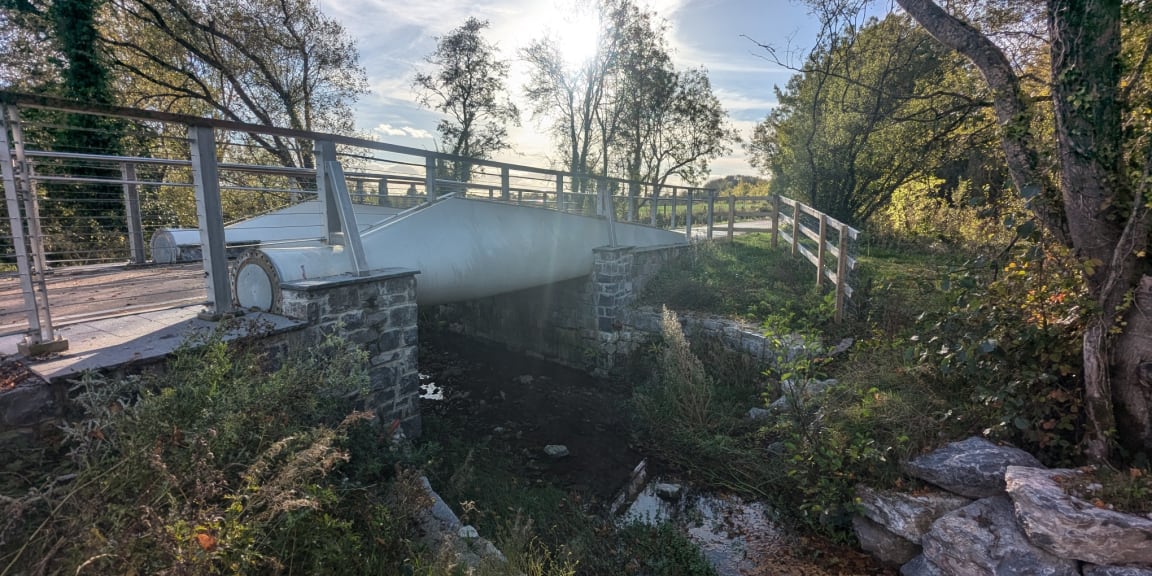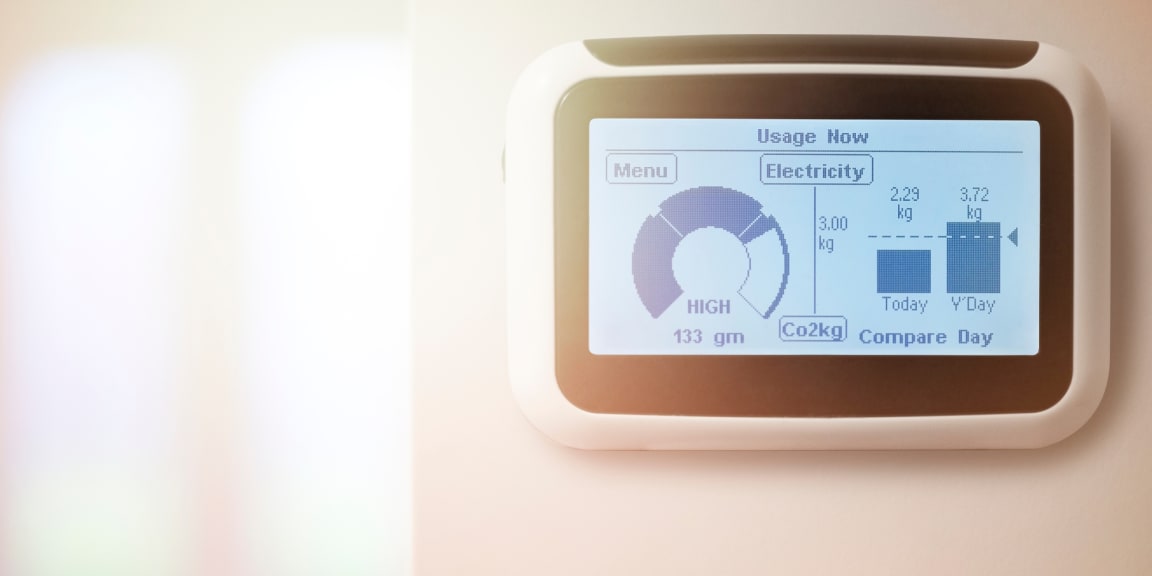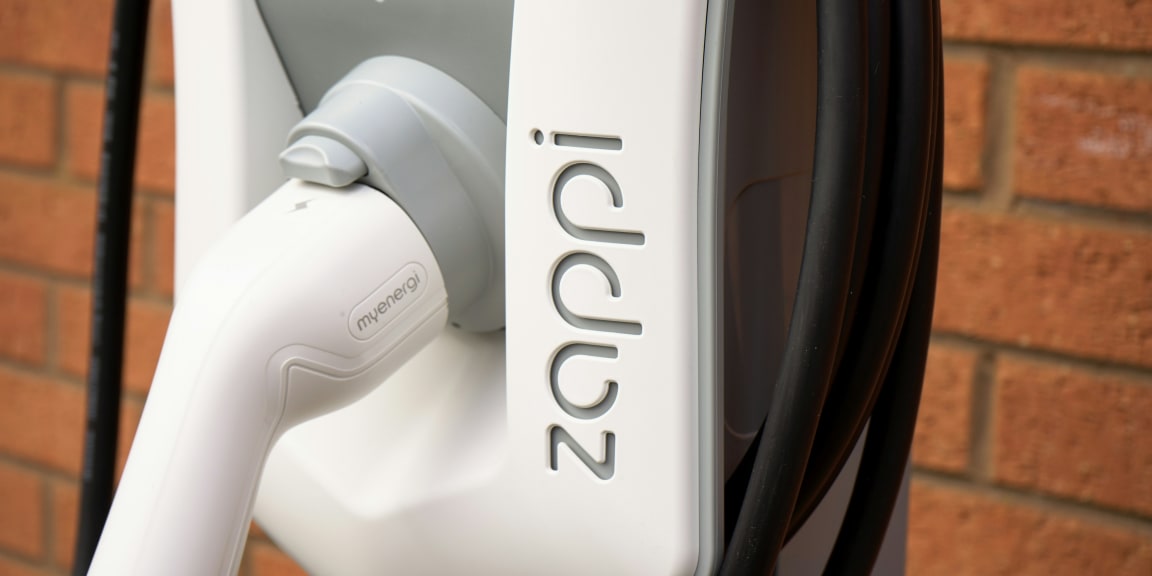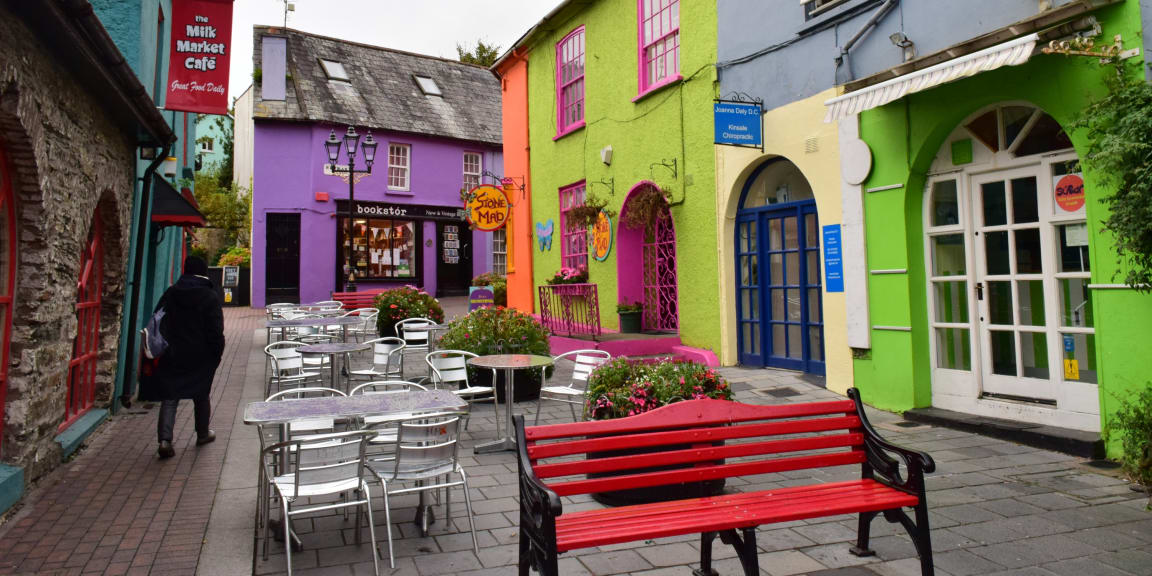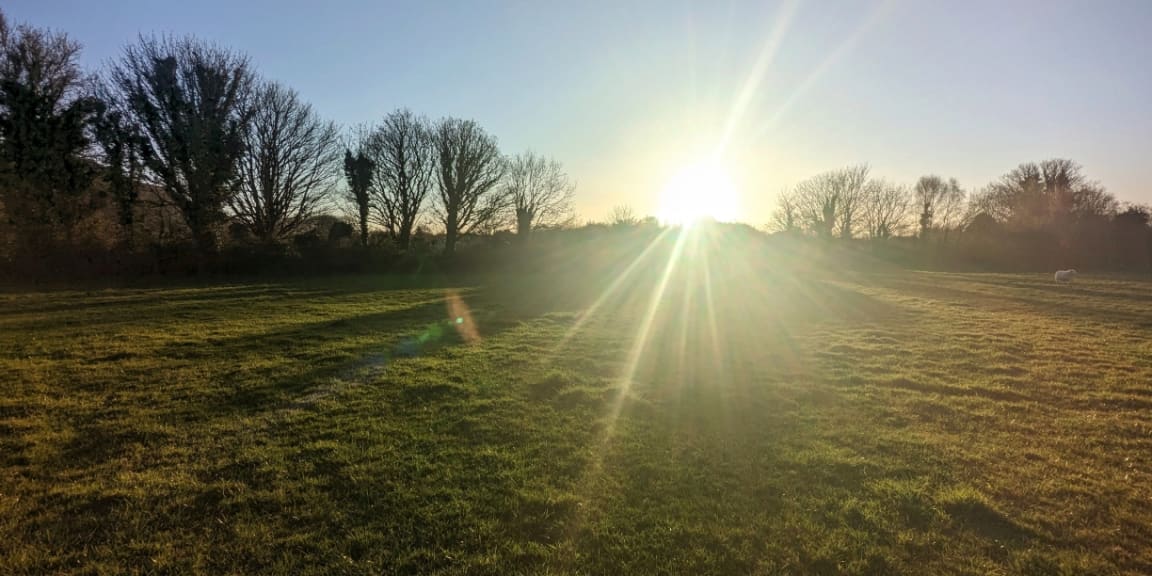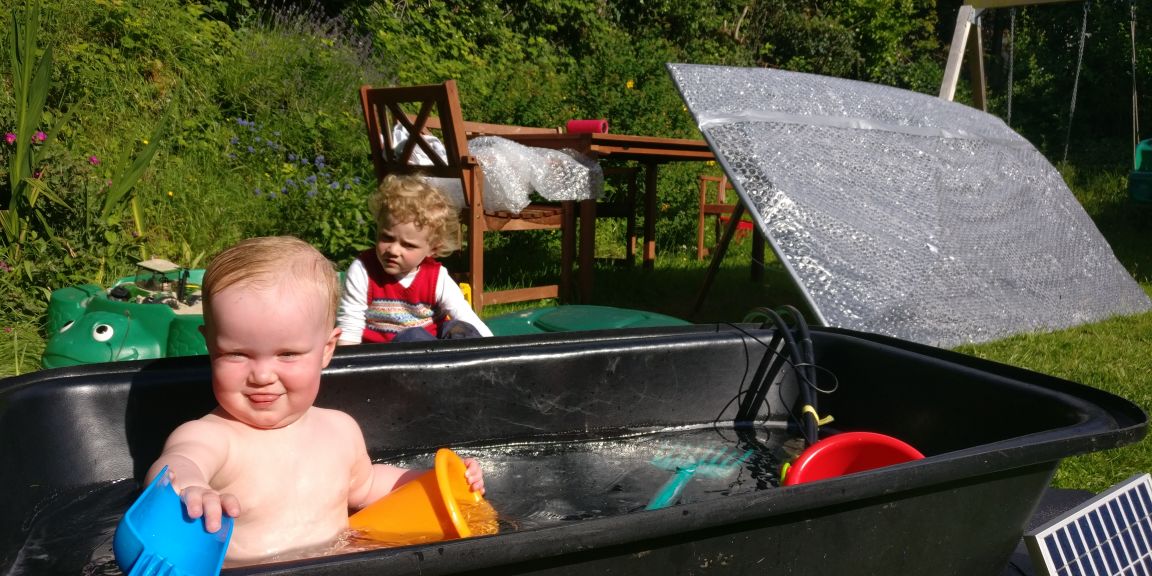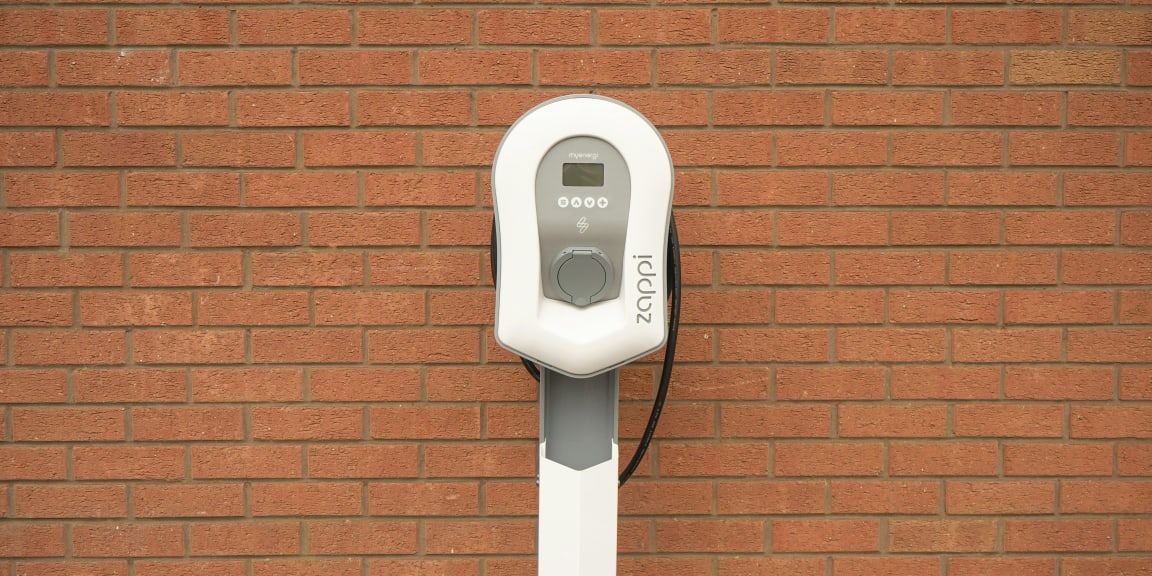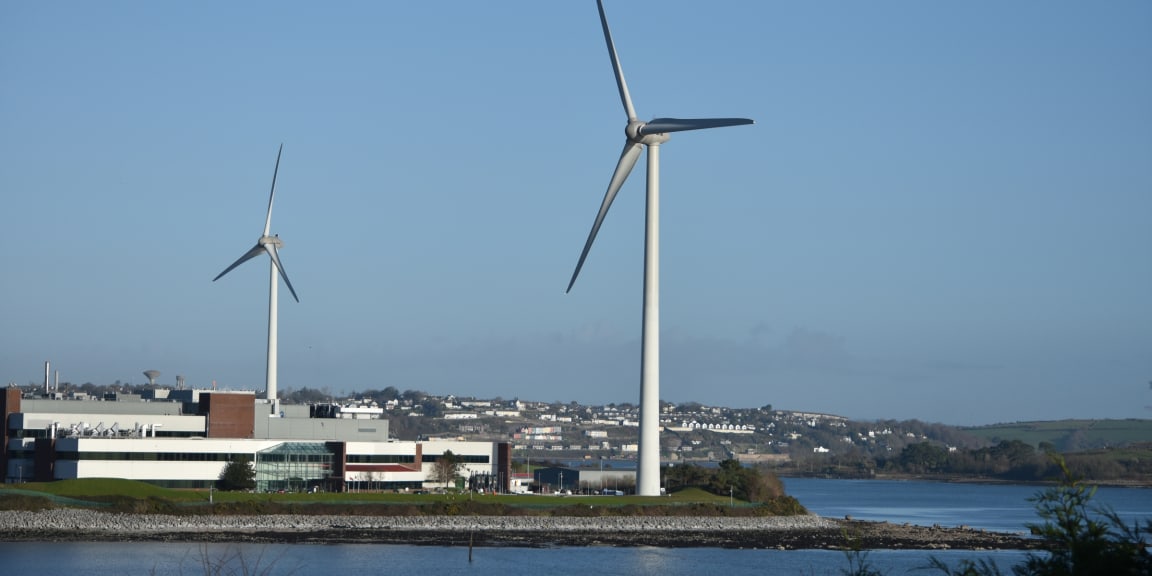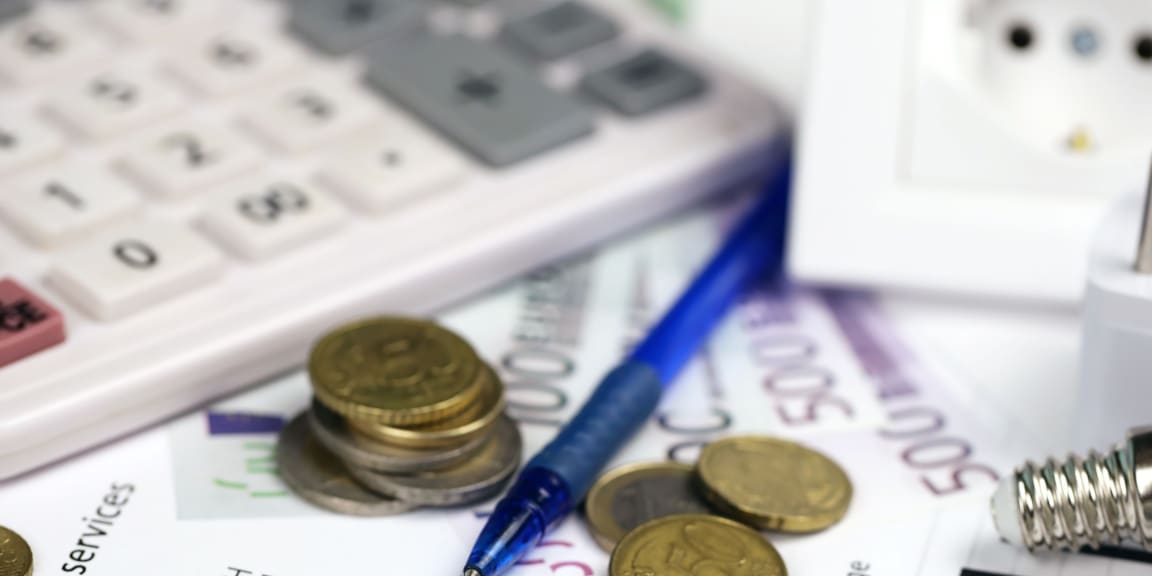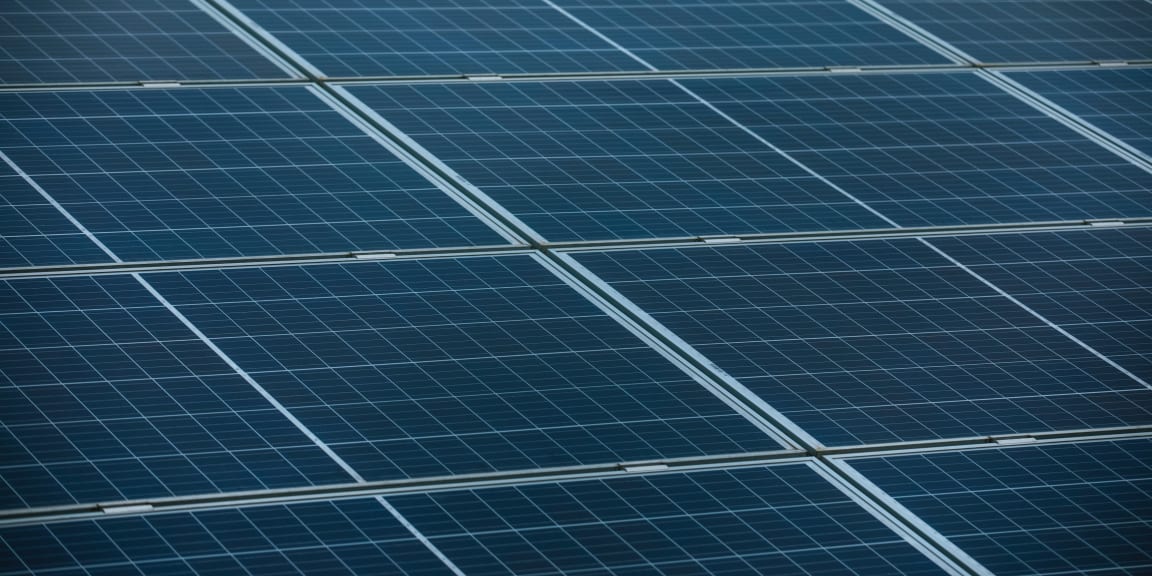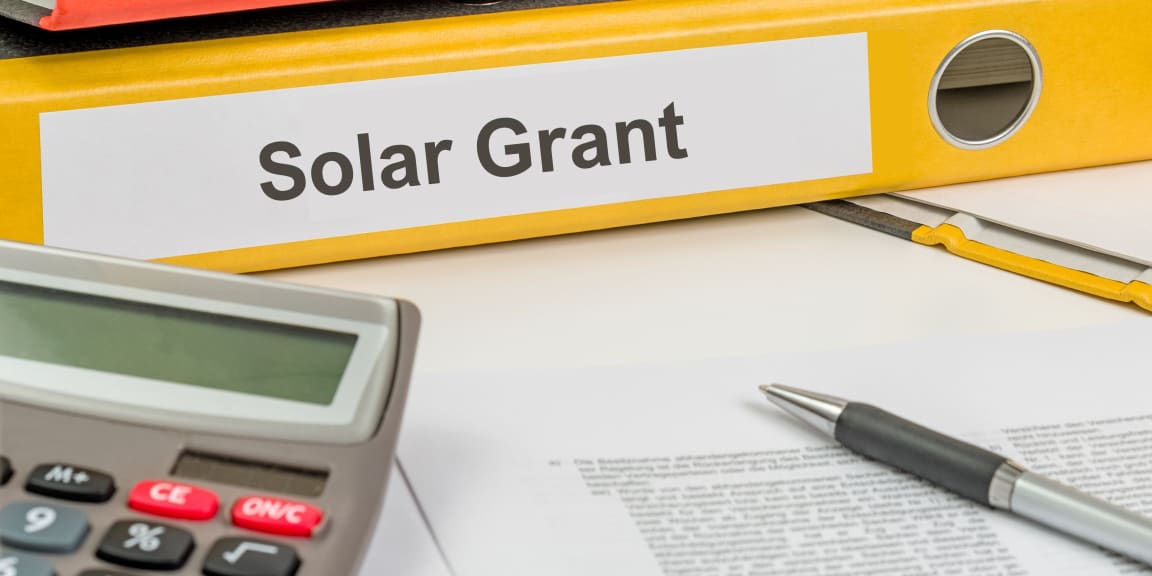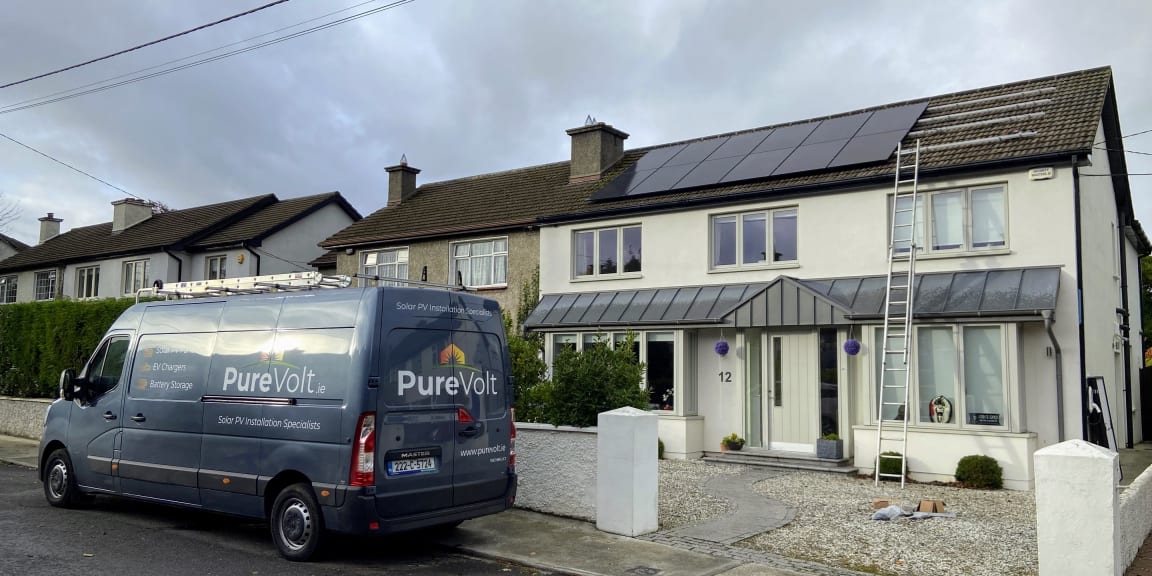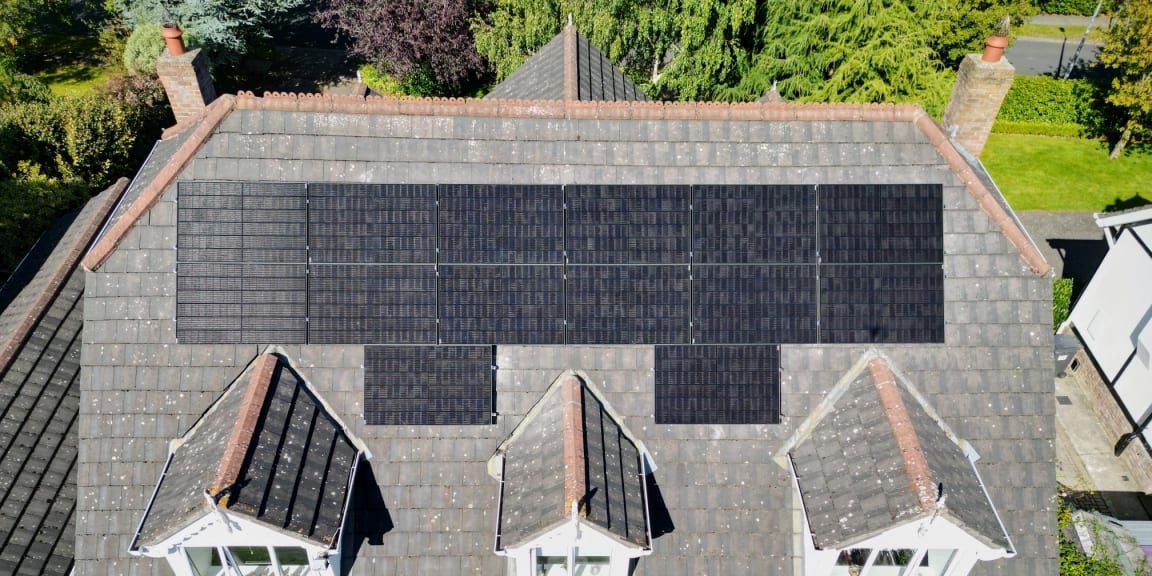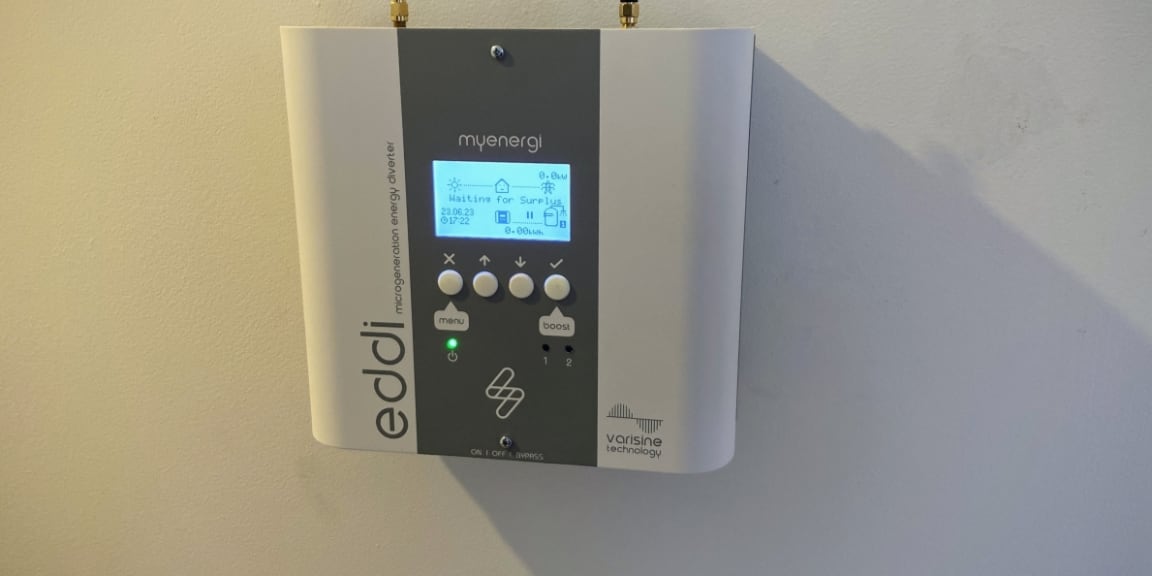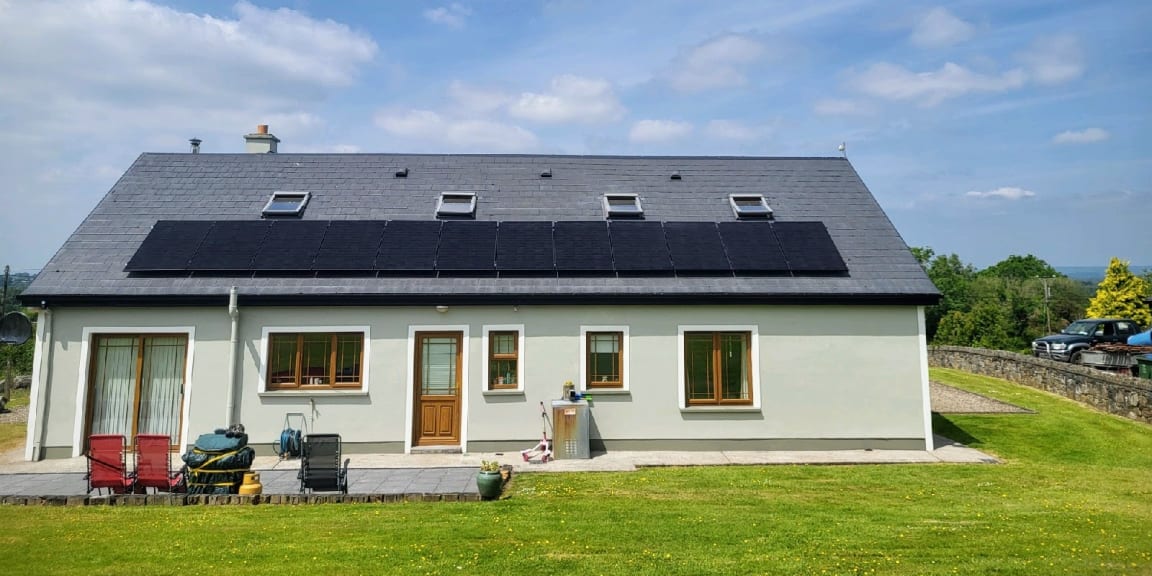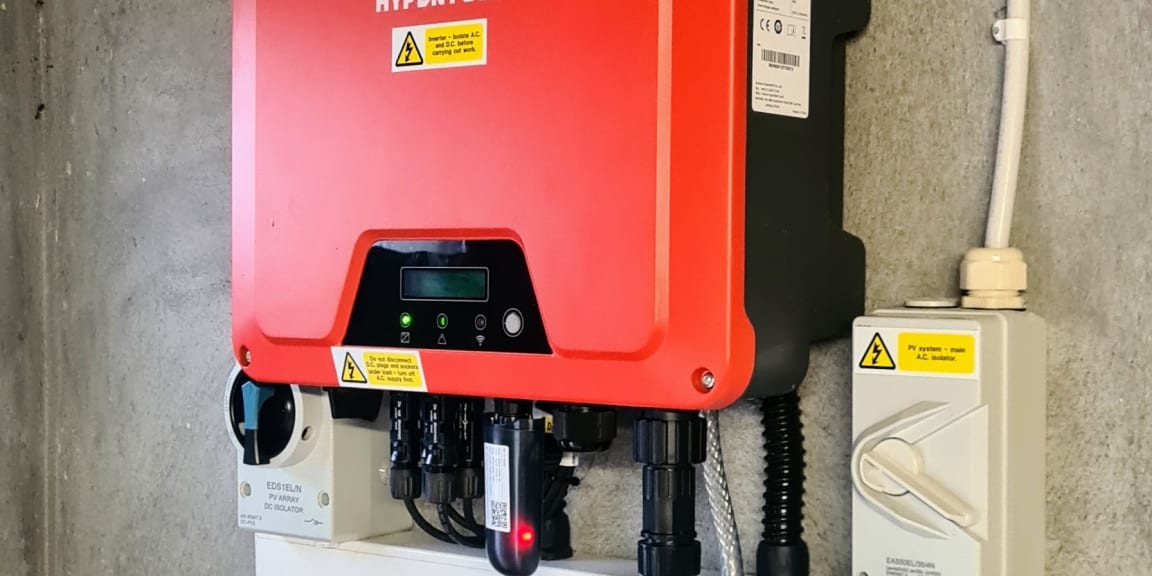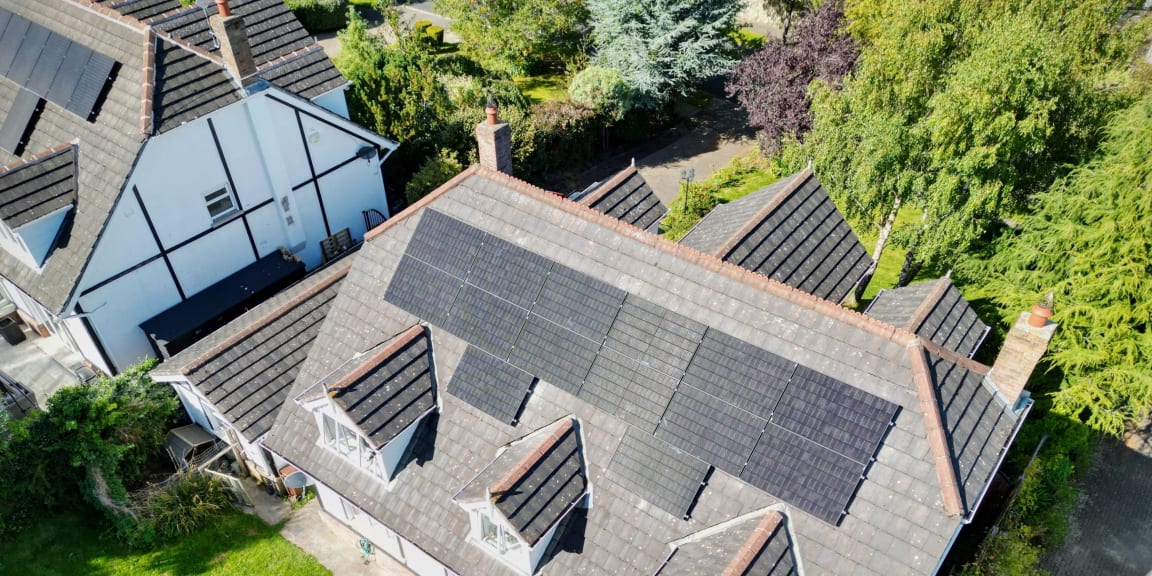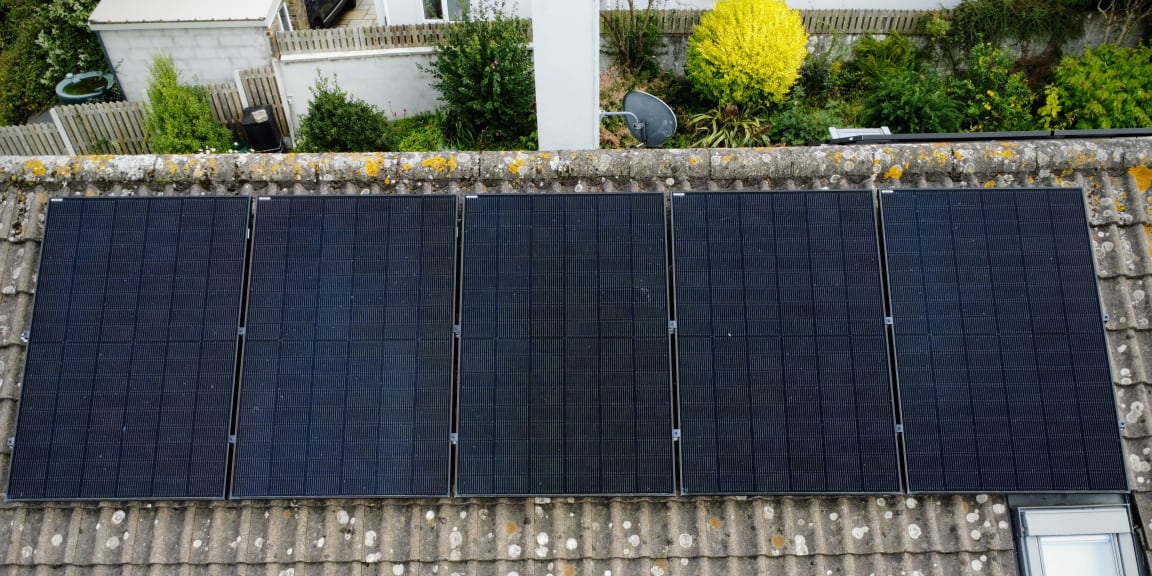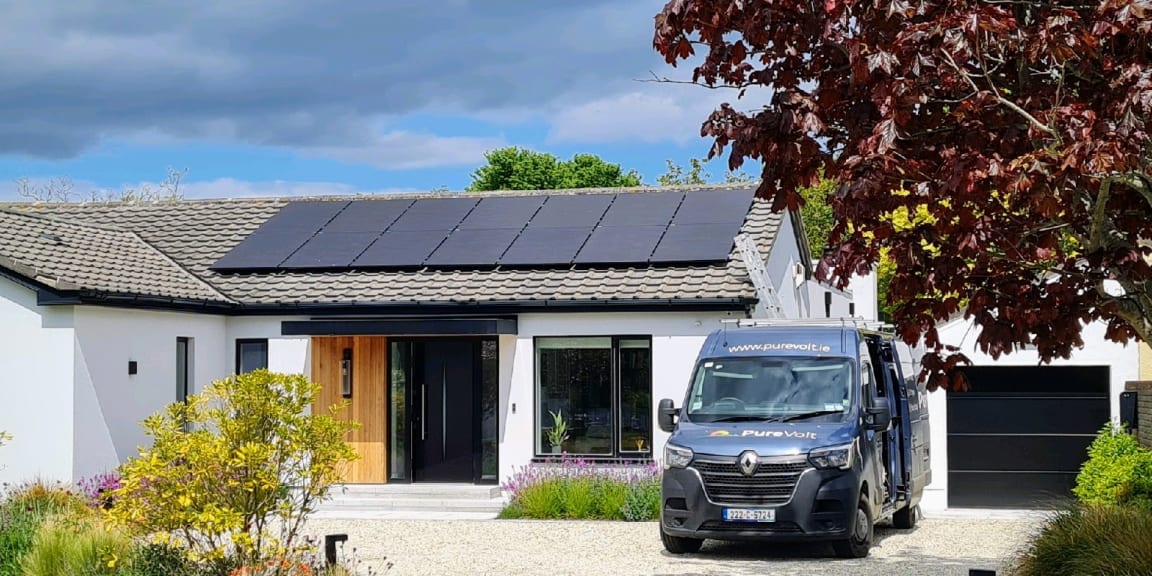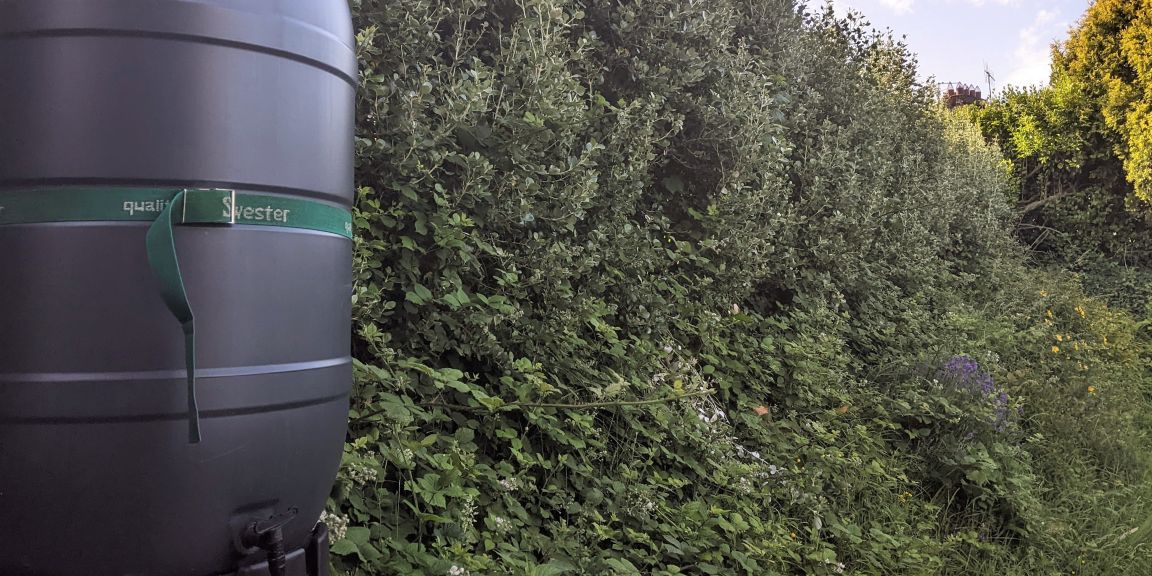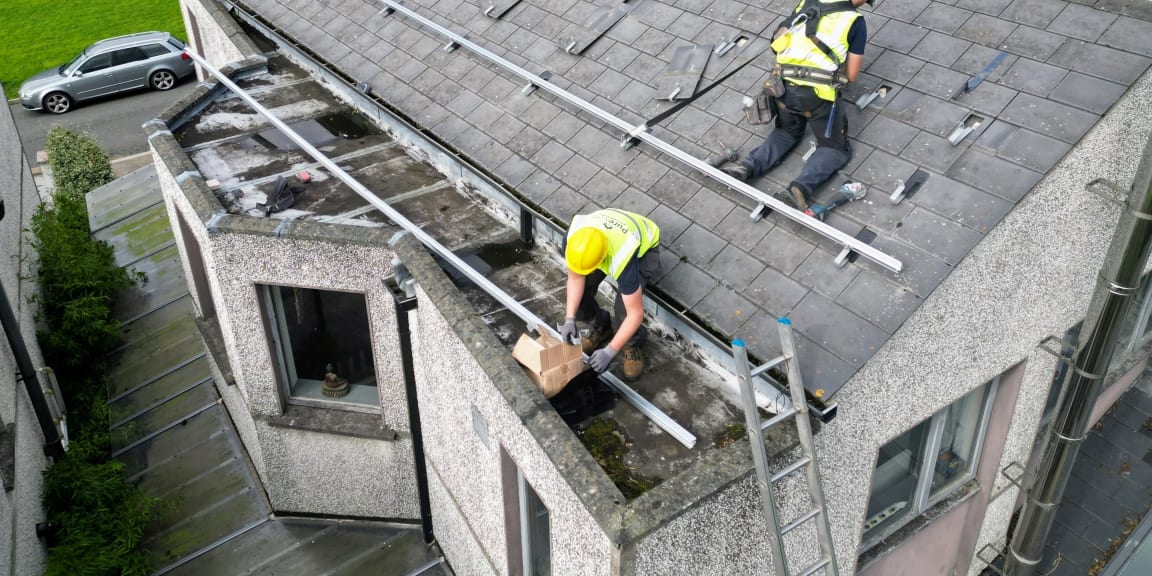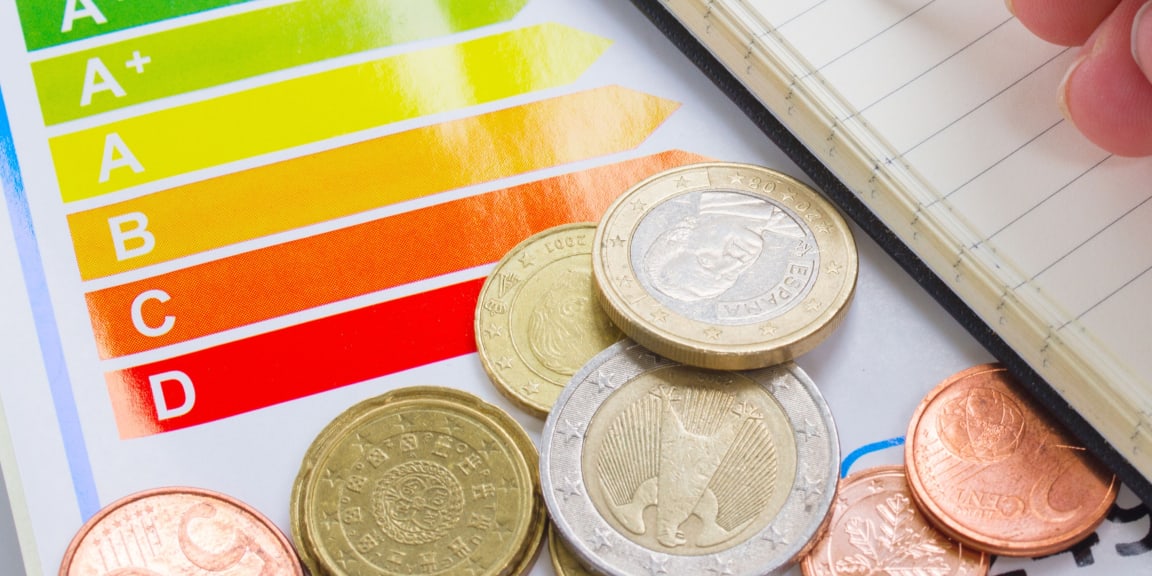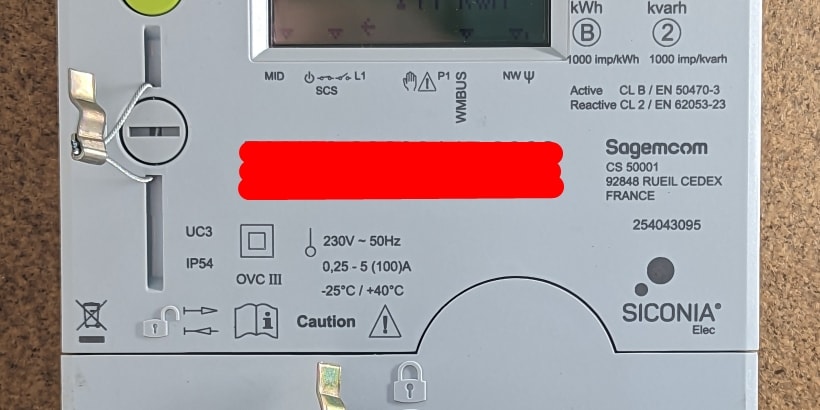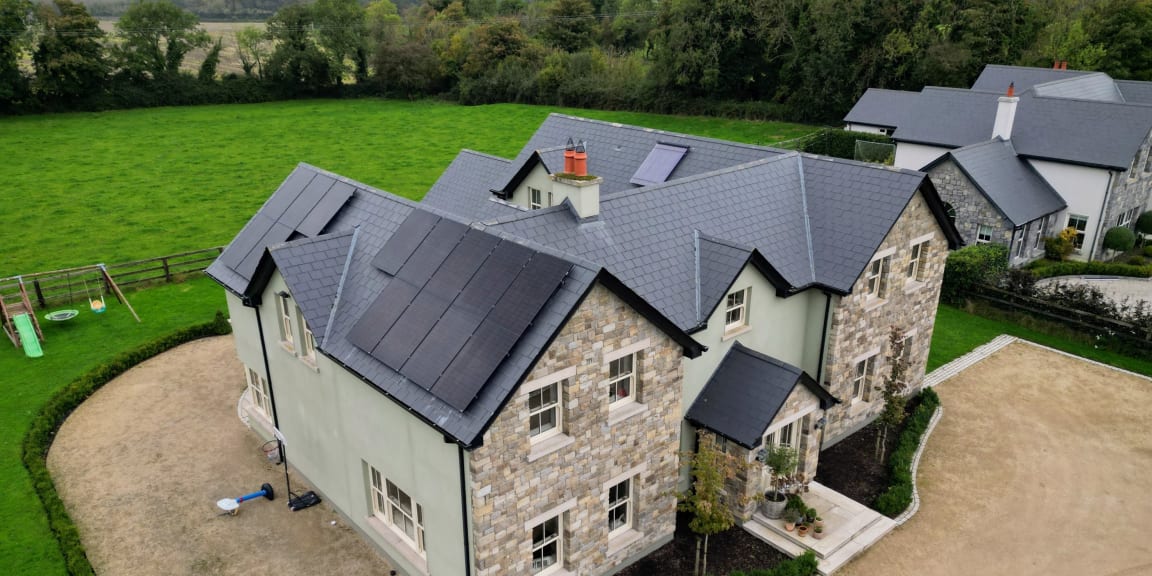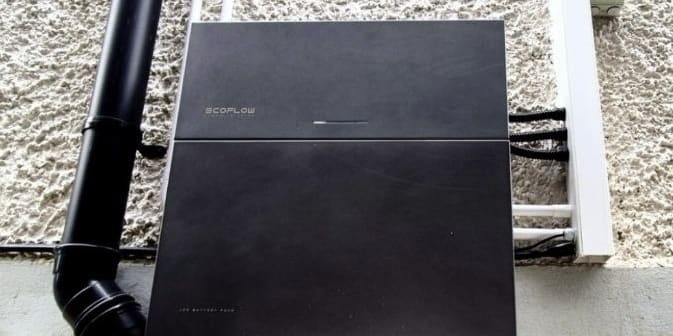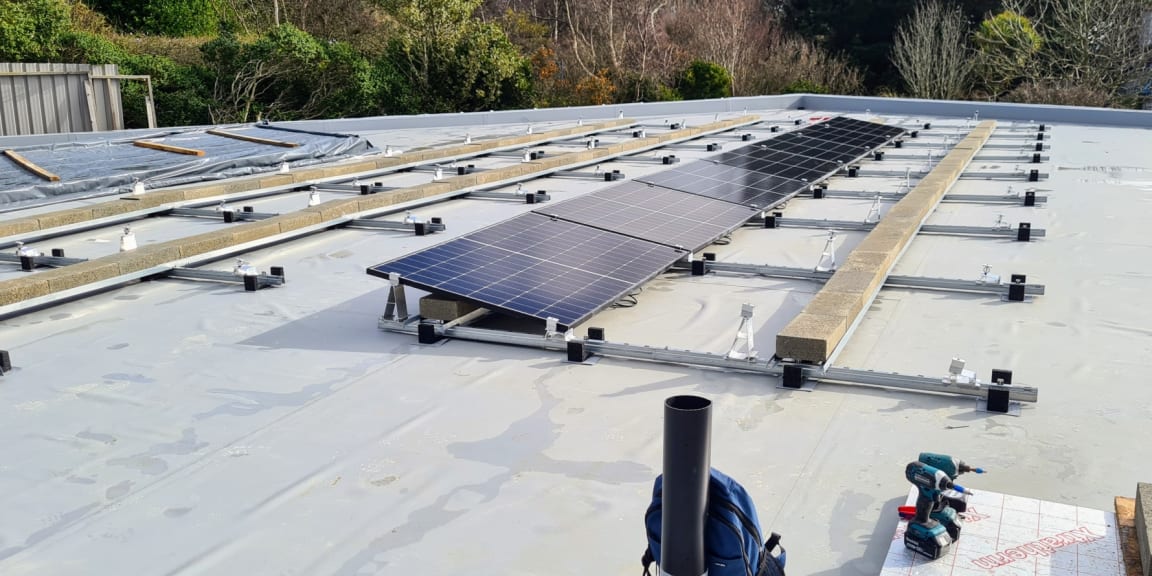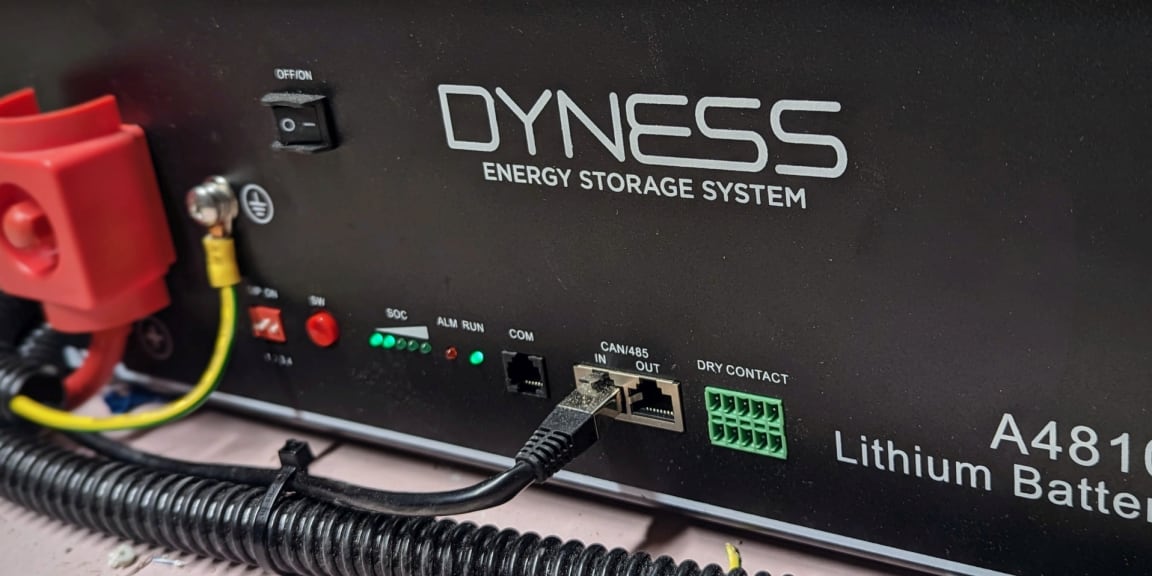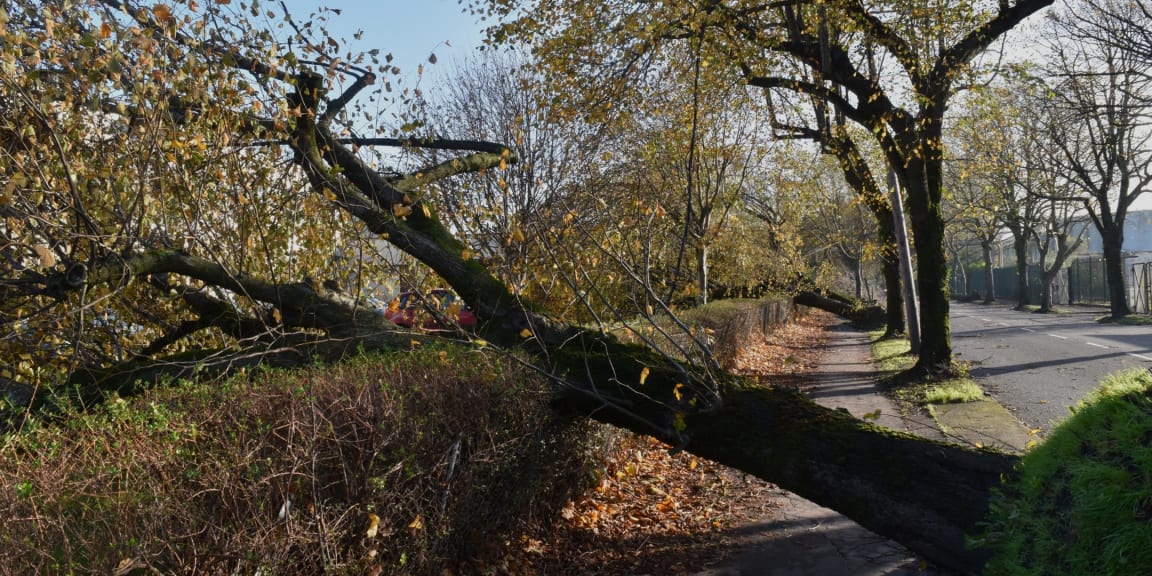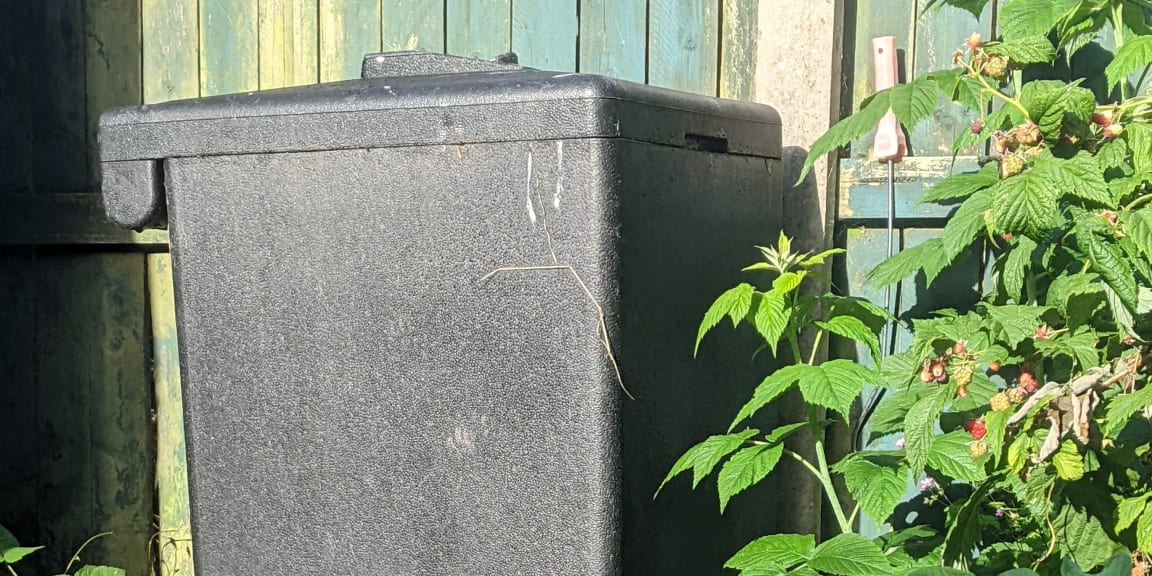1839 The photovoltaic effect
The photovoltaic effect was discovered by the 19-year-old physicist Alexandre Becquerel. While experimenting with metal electrodes and electrolytes, he observed that conductivity increased when the setup was exposed to light.
This is the basis on which all solar cells work. When sunlight hits a semiconducting material like a solar cell, there is a change in the voltage and current.
What was the environmental picture?
Although there is no precise record for the year 1839 (records begin in 1850), the average Irish citizen likely consumed around 6.5 tonnes of CO2 equivalents each year. This was a different era, with the Industrial Revolution only just beginning to gather steam. In 1839, 95% of the world's energy came from traditional biomass. Most of this would have been wood fires, but other biofuels include dung and (especially in the case of Ireland) peat. The only other significant source of energy was coal, which represented 4.88% of the global energy mix. The coming Industrial Revolution would see that number climb quickly, as this history will show. Global energy consumption in 1839 stood at 7,300 TWh (see the data).
What else was happening in Ireland?
1839 was the first year when Ireland started to experience the potato blight that would cause widespread starvation, disease, and depopulation over decades to come.
1873 Photoconductivity of selenium
In the years leading up to 1873, Willoughby Smith developed a test that allowed him to check cables continuously while they were being laid underwater. He needed a semiconducting material for this test, so he used selenium. Confused by inconsistent results, Smith discovered that illuminating selenium rods with light significantly increased their conductivity.
What was the environmental picture?
In 1873, Ireland's greenhouse gas (GHG) emissions totalled 6.60 tonnes of CO2 equivalents per capita. A quarter of the world's energy came from fossil fuels, with 72.95% coming from biomass. Global energy consumption had by now risen to 9,519 TWh (see the data).
What else was happening in Ireland?
1873 marked the founding of the Home Rule League, which laid the groundwork for future nationalist movements in Ireland. Eventually, it led to the establishment of the Irish Parliamentary Party and the broader push for Irish independence.
1876 Powered by sunshine
The observation of photo-conductivity in selenium led to more investigations by other scientists. Conducting research in 1876, Professor William Grylls Adams and his assistant, Richard Evans, proved that solid materials could change sunlight into electricity without heat or moving parts. This was when the idea for producing solar cells was born.
What else was happening in Ireland?
In 1876, construction of the Dublin Science and Art Museum (now part of the National Museum of Ireland) began. The museum would showcase the cultural, historical, and scientific achievements of Ireland for decades to come.
1881 The first commercial solar cells
In 1881, an American inventor named Charles Fritts created the first commercial solar cells from selenium. However, these solar cells were very inefficient. Only 1% of the light that hit the cell was converted into electricity. Despite this inefficiency, Fritts predicted that solar cells would compete with coal-fired power plants one day.
What else was happening in Ireland?
The year 1881 was a significant one for Ireland and its fight for independence. British Prime Minister William Gladstone introduced the Second Irish Land Act, stating his desire to give Irish tenant farmers fair rent, protection from arbitrary eviction, and the right to sell their interest in a tenancy. But as they gave with one hand, the British Parliament took with the other. The Coercion Act of 1881 allowed the British authorities to arrest and imprison people without trial if they were suspected of causing unrest or engaging in illegal activities.
1905 Enter Albert Einstein
Until 1905, no one could explain how light appeared to generate energy in solid materials. This was until a 26-year-old Swiss patent clerk published four scientific papers that would change the world. His name was Albert Einstein.
Einstein's papers covered Brownian motion, mass-energy equivalence, and, most famously, the special theory of relativity. However, the first in the series focused on the photoelectric effect. This paper introduced the idea that light could be thought of as consisting of discrete packets of energy, called photons. It provided key evidence for quantum theory and later earned him the Nobel Prize in Physics in 1921.
What was the environmental picture?
In 1905, Ireland's greenhouse gas (GHG) emissions stood at 6.61 tonnes of CO2 equivalents per capita. This was perhaps the last year in history when humans got more energy from biomass than from coal. 49.24% of the world's energy now came from fossil fuels. By 1900, global energy consumption stood at 12,131 TWh (see the data).
What else was happening in Ireland?
In 1905, Arthur Griffith founded Sinn Féin, initially as a political movement advocating for Irish self-reliance and independence from British rule. Although Sinn Féin began with a focus on peaceful constitutional means of achieving Irish independence, it would later evolve into the political vehicle for Irish republicanism.
1914 Barriers overcome
In 1914, Goldman and Brodsky discovered that the photoelectric effect was linked to the presence of a barrier that prevents the flow of electric current at the point where a semiconductor meets a metal. This breakthrough provided crucial insights that later became essential for developing practical photovoltaic devices, that convert sunlight into electricity.
What was the environmental picture?
By 1914, Ireland's greenhouse gas (GHG) emissions had reached 7.72 tonnes of CO2 equivalents per capita. For the first time, over half of the world's energy now came from coal, with fossil fuels together representing a combined 58.66% of the global energy mix. Global energy consumption was rising quickly and would reach 18,077 TWh by 1920 (see the data).
What else was happening in Ireland?
The outbreak of World War I in August 1914 dramatically changed the political landscape in Ireland. Both nationalists and unionists put aside, at least temporarily, their differences to support the British war effort. Leader of the Irish Parliamentary Party (IPP), John Redmond, encouraged Irishmen to enlist, promising that Home Rule would be implemented after the war to reward Ireland's loyalty. Around 200,000 Irishmen served in the British Army during World War I, with many believing they were fighting for the future of Ireland's self-government.
However, the war's postponement of Home Rule and the high Irish casualties on the battlefield would later contribute to disillusionment with the British government and fuel the more radical independence movement.
1916 Experimental proof
In 1916, scientist Robert Millikan set out to test Albert Einstein's theory of the photoelectric effect. He conducted experiments in a vacuum to investigate whether light was truly responsible for ejecting electrons from a material. Despite initially aiming to challenge Einstein's theory, Millikan's results ultimately confirmed Einstein's explanation: that light consists of photons, discrete packets of energy.
What else was happening in Ireland?
In 1916, Ireland witnessed one of the most pivotal events in its struggle for independence: the Easter Rising. This year is a major turning point in Irish history, shifting the focus from Home Rule within the United Kingdom to a demand for full independence.
On Easter Monday (April 24, 1916), around 1,200 members of the Irish Volunteers, the Irish Citizen Army, and the Cumann na mBan (the women's auxiliary), led by a group of republican leaders, seized key locations in Dublin, including the General Post Office (GPO), which became the headquarters of the rebellion.
After six days of heavy fighting, in which over 400 people were killed (including rebels, British soldiers, and civilians), the rebels were forced to surrender on April 30, 1916. The GPO and much of central Dublin were severely damaged during the fighting, including by British shelling.
1918 The first silicon crystal
Jan Czochralski was a Polish chemist who invented the 'Czochralski' method of growing single crystals of metals, semiconductors, salts, and gemstones.
He accidentally discovered this when he mistakenly placed his pen into a pot of molten tin instead of his inkwell. When he drew out his pen from the pot, he was left with a thin filament that, upon further inspection, turned out to be a single crystal.
Based on this, he developed his method of making single crystals, which is still used today. This method contributed greatly to making silicon ingots to manufacture modern solar cells.
What else was happening in Ireland?
In December 1918, the people of Ireland cast their votes in the British general election. Or rather, some of them did. It was the first general election in which all men over 21 and all women over 30 could vote.
Sinn Féin achieved a landslide victory, winning 73 out of 105 Irish seats in the British Parliament. Sinn Féin members elected to the British Parliament refused to take their seats at Westminster, as they had pledged during the election campaign. Instead, they gathered in Dublin in January 1919 to form the First Dáil Éireann (Irish Parliament), declaring Ireland an independent republic.
1939-41 The modern solar cell
Russell Ohl was an American engineer. His primary area of research was into the behaviour of certain types of crystals. In 1939, Ohl discovered the mechanism by which the p-n junction worked. The p-n junction is a boundary between p-type and n-type semiconductor materials, allowing current to flow in one direction.
Later, Ohl refined his techniques to create reliable and predictable semiconductor materials by super-purifying germanium. In 1941, he applied this knowledge to design and patent the modern solar cell.
What was the environmental picture?
By the outbreak of WWII, Ireland's greenhouse gas (GHG) emissions stood at 11.37 tonnes of CO2 equivalents per capita. Over half of the world's energy consumption was still fuelled by coal, but oil also accounted for a significant proportion (11.6%). Taken together, fossil fuels now represented a combined 66.09%, while biomass had, for the first time, shrunk to less than a third. Global energy consumption by now totalled 22,869 TWh (see the data).
What else was happening in Ireland?
In the inter-war period, Ireland achieved independence through a series of events that culminated in the establishment of the Irish Free State in 1922.
Between 1939 and 1941, Ireland faced significant challenges as World War II unfolded. Although Ireland remained officially neutral during the war, these years were marked by political, economic, and social pressures both domestically and internationally.
1950s Silicon PV cells developed
In 1954, Bell Labs scientists Daryl Chapin, Calvin Fuller and Gerald Pearson constructed a solar cell with 6% efficiency, for the first time providing enough electricity to run electrical devices. In 1955, Western Electric (a sister company of Bell Labs) began licensing solar cell technologies commercially. The technology had an output efficiency of around 2%.
By 1957, Hoffman Electronics were able to introduce cells with increased efficiency, at 8%. And by 1959, this had climbed to 10%. Solar was slowly becoming viable as a scalable energy source.
What was the environmental picture?
In 1954, Ireland's greenhouse gas (GHG) emissions stood at 12.15 tonnes of CO2 equivalents per capita. Industrial economies were rebuilding from the shattered ruins of WWII, and fossil fuels now accounted for 70.5% of the global energy mix. Global energy consumption now amounted to 28,564 TWh (see the data).
What else was happening in Ireland?
In 1949, under the Republic of Ireland Act, Ireland formally became a republic, fully severing its remaining constitutional ties to the British Crown and leaving the British Commonwealth.
In 1954, a coalition government took office following a general election in May. The coalition was composed of Fine Gael, Labour, and Clann na Talmhan (a small farmers' party), and was led by John A. Costello of Fine Gael as Taoiseach (Prime Minister). This marked a shift in power from the Fianna Fáil government led by Éamon de Valera, which had dominated Irish politics for many years.
1963 Viable photovoltaic module
In the late 1950s, Sharp Corporation invested a lot of effort into solar-powered research. In 1963, they produced a viable photovoltaic module of silicon solar cells that they then mass-produced.
What was the environmental picture?
By 1963, Ireland's greenhouse gas (GHG) emissions had risen to 13.68 tonnes of CO2 equivalents per capita. Fossil fuels now represented 77.09% of the global energy mix. Global energy consumption had almost doubled in a decade, reaching 52.523 TWh by 1965 (see the data).
What else was happening in Ireland?
In 1963, U.S. President John F. Kennedy visited Ireland. The first U.S. president of Irish Catholic descent, Kennedy was greeted with huge enthusiasm and warmth during his four-day visit. He visited County Wexford, where his ancestors had emigrated from, and made stops in Dublin, Galway, Limerick, and Cork. Kennedy's visit was symbolic of the deep historical and emotional ties between Ireland and the Irish diaspora in the United States.
1992 20% efficiency
The efficiency of solar cells has continued to increase steadily over time. In 1992, the Centre for Photovoltaic Engineering at the University of New South Wales applied for a patent on silicon solar cells with 20% efficiency. Solar PV was transitioning from a concept with potential to a viable and affordable means of generating electricity for homes and businesses.
What was the environmental picture?
By 1992, Ireland's greenhouse gas (GHG) emissions had gone up to 14.73 tonnes of CO2 equivalents per capita. That year, Ireland consumed 120.59 TWh of fossil fuels (equivalent to 10,000 large offshore wind turbines). Global energy consumption now stood at 108,252 TWh and the rate of increase was showing no signs of slowing (see the data).
What else was happening in Ireland?
In the early 1990s, public awareness of environmental issues in Ireland was growing, spurred in part by the international focus on sustainability following the Earth Summit. In 1992, the Irish government launched the National Environmental Awareness Campaign, aimed at educating the public on the importance of environmental protection, waste management, and energy conservation. During this period, Ireland introduced the first tax incentives for investments in renewable energy projects, such as wind farms and solar.
1992 also saw the launch of Ireland's Environmental Protection Agency (EPA). The EPA was given broad powers to regulate and monitor environmental issues across the country, including water quality, air pollution control, waste management and industrial pollution.
1999 Worldwide 1GW solar
By the late 1990s, solar had come a long way. By this time, Ireland had its first solar panels and worldwide solar PV installations had surpassed 1 GW.
What was the environmental picture?
By the dawn of the new millennium, Ireland's greenhouse gas (GHG) emissions had reached 17.81 tonnes of CO2 equivalents per capita. 76.63% of the world's energy came from fossil fuels. While less than 0.01% of it came from solar, a promising 6.94% came from renewable sources. Global energy consumption now stood at 119,843 TWh (see the data).
What else was happening in Ireland?
In 1998-1999, Ireland was implementing the historic Good Friday Agreement, which brought hope for peace in Northern Ireland. The establishment of the Northern Ireland Assembly and North/South Ministerial Council were key milestones in this process. As Taoiseach, Bertie Ahern played a pivotal role in the peace process, helping to negotiate the Good Friday Agreement and overseeing its early implementation. In 2011, Ahern was awarded the Peace Builder Award from the Clinton Global Initiative for efforts in securing the agreement. Additionally, in 2008, he was honoured with the International Leadership Award by the American Ireland Fund for his leadership.
2002 National Renewable Energy Strategy
Published in 2002, the National Renewable Energy Strategy was a significant policy document for Ireland, aimed at outlining the country's renewable energy targets and guiding its transition towards more sustainable energy sources. This strategy laid the groundwork for Ireland's commitment to reducing its reliance on fossil fuels and increasing the share of renewable energy in its overall energy mix.
Alignment with EU commitments saw the introduction of a target to have 12% of total energy consumption come from renewable sources by 2010.
2009-2010 Feed-in Tariff and Solar Grants
The Renewable Energy Feed-in Tariff (REFIT) scheme was introduced in 2009 as a key policy measure to support the generation of renewable electricity in Ireland. REFIT aimed to provide long-term financial support for renewable energy projects, particularly focusing on wind, biomass, and small hydroelectric plants.
By guaranteeing a minimum price for electricity generated from these sources, the scheme encouraged investment in renewable technologies and played a critical role in helping Ireland meet its EU renewable energy targets.
In 2010, the Irish government launched the first-ever solar grants in Ireland. The scheme was designed to encourage the installation of solar panels by offering financial incentives to reduce the initial setup costs. By enabling homeowners to generate their own renewable electricity, the scheme aimed to promote energy independence and contribute to Ireland's renewable energy targets.
2015 Climate Action Plan
The Climate Action Plan 2015 marked a significant policy effort by the Irish government to address climate change with ambitious targets for renewable energy. The plan set out a comprehensive roadmap for reducing greenhouse gas emissions and increasing the share of renewable energy in the country's energy mix, with a target of 40% of electricity to come from renewable sources by 2020.
Focused on developing wind, solar, and bioenergy, the plan also highlighted the importance of energy efficiency, sustainable transport, and a low-carbon economy, reinforcing Ireland's commitment to international climate agreements.
2024 Climate Action Plan
The Climate Action Plan 2024 builds on Ireland's ongoing commitment to addressing climate change with even more ambitious targets for renewable energy. The plan aims to achieve 80% of electricity from renewable sources by 2030, driving significant growth in wind, solar, and other clean energy technologies.
It also emphasizes decarbonizing key sectors like transport and agriculture, enhancing energy efficiency in homes and businesses, and promoting the use of electric vehicles. The 2024 plan sets a strong framework to achieve Ireland's long-term climate goals and adhere to international climate agreements, positioning the country as a leader in the global energy transition.
The plan aims to significantly expand Ireland's installed solar capacity, targeting a total of 8 GW of solar energy by 2030, including 2.5 GW specifically for non-utility (or rooftop and small-scale) solar installations.

